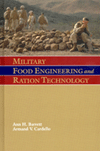
Beef tallow, animal fat and other sources of oil typically are mixed with methanol to create biodiesel, and methanol typically is derived from natural gas. Another option is biomethanol, and the first commercial plant to generate biomethanol begins commercial production early this year near Milford, Utah. The $20 million project is operated by BEST Biofuel LLC, an investment group formed a year ago and now a consolidated subsidiary of Smithfield Foods Inc. The plant will process manure from 23 Smithfield-owned pig farms to produce 25 tons a day of liquid biomethanol while returning treated water for washdown at the farms.
Heading up the Utah project is Jerrel Branson, president of Austin, Texas-based BEST. Branson was the founder of Ecogas Corp., a major manager of biogas collection systems at landfills. After operating Ecogas for a decade, Branson sold the firm and began looking for other opportunities for his technical expertise. He holds a degree in petroleum economics and describes himself as an engineer by practice. Food Engineering spoke with Branson on the eve of the Utah facility's startup.
FE: Explain the biomethane process.
Branson: There are two large pyramids of Circle Four Farms in the Milford, Utah, region. We'll take waste from one of those pyramids, representing 23 farms with 240,000-head of finishing hogs. The waste stream will be conveyed in a collection system not unlike a municipal sewage system, with lifts, pumps and about 40 miles of six- and eight-inch plastic pipe.
The first step when the waste reaches the processing facility is pump it to the four concentrators where total solids are raised to 6 percent from 1.5 percent. Without this step, the volume of incoming waste would overwhelm the system. Concentrated slurry then goes to four sewage treatment tanks measuring 65 feet around each and with a capacity of 4 million gallons. Steam is injected into the enclosed tanks to raise the temperature to 95

Branson: As you can imagine, the state was very cautious in reviewing the project because this is a whole new process. We were able to do some preliminary work that didn't require permits in the spring, but the extensive permitting process pushed the start of construction back to midyear.
The site is remote from any industrial center, and although the local crews were excellent, they didn't have the technical expertise to build many of the plant's components, Therefore, we built our components elsewhere in a modular fashion, then shipped them to the site for assembly.
FE: Are there any new technologies involved in the biomethanol process?
Branson: There's no new science here. We've done the same cleaning up of the gas before at landfills, which posed a much greater challenge. This project represents a new combination of proven technologies.
FE: North Carolina State scientists are evaluating various ways to alleviate hog waste. Was this methodology demonstrated there?
Branson: Nineteen different technologies are being reviewed by North Carolina State, including a methane-feedback demonstration. The Milford facility is about as small a biomethane plant could be and still be economically feasible. If this were to be done in a region such as North Carolina, we would find a way of concentrating the waste at the farm level before bringing it to the facility.
FE: How competitive can biodiesel be with traditional diesel fuels?
Branson: When Dr. Rudolf Diesel demonstrated the first diesel engine at the Paris World's Fair in 1900, he used peanut oil to power it. At that time, the only application for crude oil was as kerosene for lighting. That changed, of course, when it was discovered that refined crude was an inexpensive power source for compression engines, as well as internal combustion engines.
But biodiesel has 600 times more lubricity than traditional diesel fuel, which relies on 500 parts per million (ppm) of sulfur to lubricate the engine. In 2006, the sulfur limit goes to 15 ppm, so operators will have to find new lubricant. Biodiesel is a great solution. It's true that low-sulfur petroleum exists, and even at a 30 cents a gallon premium, it's cheaper than biodiesel. But Federal Mandate 13149 requires a 20 percent reduction in fossil fuel use by federal fleets by 2005, and biodiesel is the easiest way to meet this mandate. Add to that reductions of up to 60 percent in visible pollution, up to 43 percent less carbon monoxide and the elimination of sulfur and aromatics, and the case for the biodiesel market is compelling.


